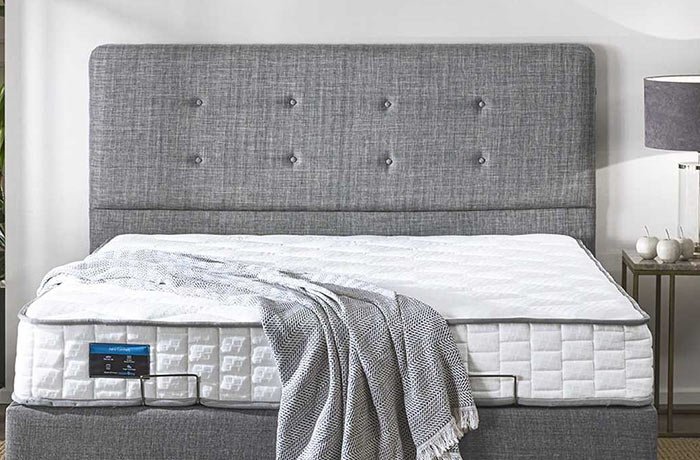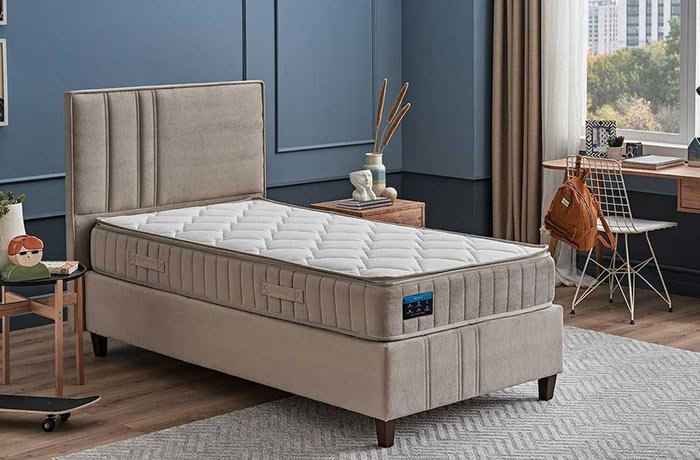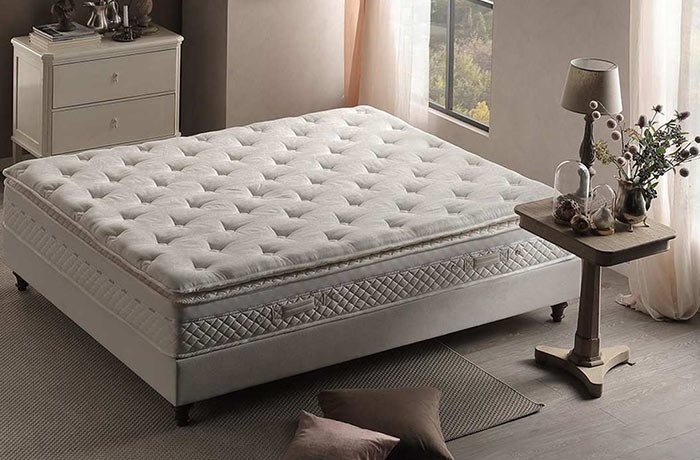
Single, double, king size, and 1.5-person bed measurements can be summarized as follows:
Single Bed Measurements
Single beds are generally produced with a width of 90 cm and a length of 190-200 cm. However, some bed manufacturers also offer single beds in different dimensions. Production in different sizes of single bed measurements can be carried out according to supply and demand.
Double Bed Measurements
Double beds are usually offered with a width of 140-160 cm and a length of 190-200 cm. Some bed manufacturers also produce double beds with a width of 180 cm or more.
King Size Bed Measurements
King size beds typically have a width of 180 cm or more. They can also have lengths of up to 200 cm. King size beds are offered in different measurements worldwide. However, the most common measurements range from 180-200 cm.
1.5-Person Bed Measurements
The size of a 1.5-person bed falls between a double bed and a single bed. The measurements for a 1.5-person bed are always 120 cm x 200 cm.

By following the correct steps, you can also measure the size of a bed. After taking measurements of the entire room, you should measure the width, length, and height of the bed. Here are the steps we have outlined:
Start by Measuring the Size of the Room Where You Will Place the Bed
This is a crucial step to begin with. Measure the area where the bed will be placed. Based on this, you can make a suitable bed selection. Take into account the space remaining from the walls and other furniture. This will ensure a more accurate measurement of the bed.
Measure the Width of the Bed
Measure the distance from one side of the wall to the other side, considering the width of the bed. You can proceed based on the measurements of a single bed.
Measure the Length of the Bed
Measure the distance from the wall where you intend to place the bed to the headboard. This will prevent any problems with fitting the bed into the space.
Measure the Height of the Bed
Many people overlook measuring the height of the bed during the measurement process, which is a mistake. However, the height is essential. This measurement determines whether the bed is at a comfortable height or not. The general height of a bed is around 25-40 cm.
If you are measuring the bed size yourself, you can follow the steps mentioned above and choose the right bed for your home. Don't forget to use masking tape and a tape measure to achieve accurate results!

Bed Comfort and Material Quality
To understand the level of material quality and comfort of a bed and to choose the right-sized bed, there are some details to consider. Here are each of them:
Support
A comfortable and properly sized bed should always provide the best support. It should also assist in aligning your body correctly and support your spine and muscles during sleep. Therefore, you should choose a bed that offers support for the spine, back, and waist.
Airflow
The airflow in the bed directly affects its humidity and temperature. Therefore, every detail of the bed, from its design to the materials used, should be prepared in a way that ensures proper airflow.
Hygiene
An essential detail: hygiene! Over time, a bed can accumulate dirt, dust, and other foreign substances, causing it to look unpleasant. Therefore, it is important for the bed to have a design that allows for frequent cleaning. For example, the bed cover should be removable.
Choosing Bed Firmness
After determining the size, several different factors come into play when choosing the firmness of the bed. Here are some of them:
Body Type
Factors such as shoulder width, hip width, and waist width play an active role in choosing the firmness of the bed. For example, individuals with broad shoulders may prefer to sleep on a softer bed, while a firm bed may be more suitable for those with narrow shoulders. Bed measurements indicate size, which serves as a criterion for making different choices based on body type.
Weight
A person with a heavier build may prefer a firmer bed, while a lighter individual may focus on using a softer mattress.
Sleeping Position
Individuals who sleep on their back or stomach tend to prefer a firmer bed, while side sleepers may prefer a softer mattress.
Health Issues
People who experience continuous pain in areas such as the back and waist should choose an orthopedic mattress. This way, they will feel more comfortable.
Choice of Bed Support System
The bed support system refers to the overall system located under the bed that ensures its stability and proper alignment with the body. Making the right choice for this system makes it easier to select a long-lasting bed.
Innerspring Support System
Beds with an innerspring support system are created by arranging metal springs underneath the bed in a specific pattern. This system is formed by a covering material that supports the body and allows airflow between the springs.
Suspension Support System
The suspension support system is produced by placing wires on the frame under the bed without touching each other. This creates more open space under the mattress, increasing airflow and preventing moisture and perspiration.
Platform Support System
This system is created by a single flat surface under the bed, which creates storage space beneath the bed. Additionally, it draws attention with its modern appearance.

Different countries have variations in bed measurements regarding length, depth, and width. Here are some examples:
We conclude our content providing detailed information about bed measurements. If you are looking for a comfortable bed model, be sure to check out Lova Yatak products. A variety of high-quality options are waiting for you there!